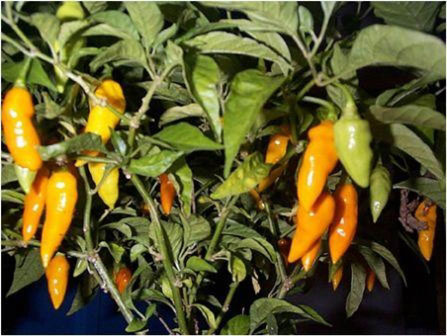by Richard Villadóniga
www.eat-american.com
Editor’s Note: According to an announcement in the St. Augustine Record dated February 3, 2010, Johnny’s Restaurant (described in the text below) has changed owners and will re-open as the Hastings Cafe on February 11. The location will remain the same.
Some people crave a big, juicy, medium-rare steak or a decadent chocolate dessert. Me, I’m a spoon man. Give me a cup of cioppino and some crusty bread and I’ll purr like a cat in your lap. It may sound clichéd, but there’s little that comforts me like a bowl of homemade chicken noodle soup. Even in the sweltering heat of the Florida summer, it’s hard for me get soup off my mind and we’ll whip up a batch of ice cold gazpacho at home just to satisfy my spoon obsession.
In my hometown of St. Augustine, when people talk soup, it’s usually of one variety: Minorcan seafood chowder. It’s a local tomato-based concoction of potatoes, bell peppers, onions, bacon, clams and/or fish (or often other types of seafood) that’s similar to a Manhattan clam chowder, only with more personality and much more kick. The chowder gets its potent heat from the Datil, a delicate little pepper that’s been cultivated almost exclusively in the area for centuries, though little is known of its intriguing history. A variation of the dish was created at some point—probably in the late 1800s—by Minorcan settlers. They had arrived in St. Augustine as early as 1776 after escaping the indigo plantations farther south in New Smyrna Beach, where they had been indentured servants. The earliest version of the chowder was most likely made with gopher tortoise rather than clams, and a basic recipe for it is even mentioned in Marjorie Kinnan Rawling’s classic Old Florida cookbook of 1942, Cross Creek Cookery. (The book even includes a how-to on butchering the once abundant gopher tortoises!)
It’s a local tomato-based concoction of potatoes, bell peppers, onions, bacon, clams and/or fish (or often other types of seafood) that’s similar to a Manhattan clam chowder, only with more personality and much more kick. The chowder gets its potent heat from the Datil, a delicate little pepper that’s been cultivated almost exclusively in the area for centuries, though little is known of its intriguing history. A variation of the dish was created at some point—probably in the late 1800s—by Minorcan settlers. They had arrived in St. Augustine as early as 1776 after escaping the indigo plantations farther south in New Smyrna Beach, where they had been indentured servants. The earliest version of the chowder was most likely made with gopher tortoise rather than clams, and a basic recipe for it is even mentioned in Marjorie Kinnan Rawling’s classic Old Florida cookbook of 1942, Cross Creek Cookery. (The book even includes a how-to on butchering the once abundant gopher tortoises!)
Though locally there persists a popular misconception that the Minorcans brought the Datil with them from their native island in Spain (though there are no indigenous Datil peppers in Minorca), the earliest known mention of it in the St. Augustine Record refutes that claim. In a June 13, 1937 article that ran in the newspaper, R.A. Ponce, a St. Augustine native, recalled that the peppers were brought to the area from Cuba by a mysterious gentleman whose last name was Vals. “Vals said he was sending to Santiago, Cuba, for seed of Spanish Datil pepper. When they came he planted them on that place where he lived. From that the peppers went to different settlements,” he is quoted as saying. The article later states that Ponce still had seed from the original stock that Vals himself had sent for, and he placed the estimated date of arrival in St. Augustine somewhere around 1880. Earlier accounts of the Datil’s inclusion in local Civil War-era dishes could not be verified.
According to the same article, locals of that era enjoyed infusing olive oil with Datil peppers and adding it to dishes. E.S. Ashton, another St. Augustinian of the time, told of this widespread use: “A fish boil without Datil pepper in the kettle seems as lacking in flavor to old-time beach picnickers as pie without cheese,” she authoritatively described. She also went on to say that a local physician of the time believed that “a half pod of Datil pepper, no seeds, has a stimulating effect on the system equal to that of a small glass of brandy.” Regardless of how far our health care system has come, I like the doctor’s logic. In many hot, tropical areas, people eat spicy foods as a way to stimulate their appetites, or to force one to sweat and cool off. A more likely explanation for the Minorcan’s addiction to Datil peppers was that the Florida heat caused food to spoil faster, and adding spice to their dishes would mask the taste of rotten food.
According to local Minorcan historian and reenactor Michelle Reyna, “In those days, without refrigeration, meat didn’t keep long. The Minorcans probably added Datil peppers to their foods to hide the foul taste,” she explained to me.

Datil pepper pods. Photo Courtesy of Flickr
user mnbass1; http://www.flickr.com/photos/27941972@N00/)
Whatever their reasons, the Minorcans (and just about everyone else in the St. Augustine vicinity) began adding Datil peppers to nearly everything they made, not just chowder. It became the centerpiece of Old North Florida cuisine. In the countryside surrounding St. Augustine, where many Minorcans eventually settled to farm the fertile land, the Datil pepper found productive soils and an ever-growing legion of fans. In tiny Elkton, a historic agricultural enclave about 15 miles west of St. Augustine, locals have celebrated a parish fair on the grounds of the St. Ambrose Catholic Church as far back as the 1880s—probably not coincidentally around the same time the Datil made its first appearance in the area.




